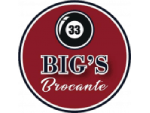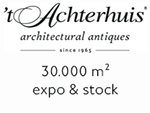Francois Boucher (paris, 1703 - 1770), The Surprised Lovers/the Pleasant Le
Francois Boucher (Paris, 1703 - 1770) - workshop/circle -
Pair of paintings The Surprised Lovers (Les amants surpris)/The Pleasant Lesson ('LAgréable Leçon)
18th century Oil on canvas 46 x 39 cm - Framed 71 x 61 cm
All the details of the two works (click HERE)
We present this splendid pair of paintings, works by a French painter from the circle of Francois Boucher (Paris, 1703 - 1770), one of the most admired and successful artists in mid-18th century France, and depicting a riot of the canons of the Rococo period - the most delicate, light and at the same time elegant of styles - capable of interpreting the peculiarities of French society of the Ancien Régime in painting. Particularly well known for his idyllic, Arcadian, sensual and intimately amorous paintings, Boucher had the ability to delight French aristocrats thanks to the subtle ironic intent of his scenes.
The two compositions, painted around the 18th century by an artist from his workshop, are part of a series dedicated to pastoral themes, depicting joyful children, always immersed in bucolic environments, engaged in romantic activities.
Love, represented in all its lightness and as a hymn to joy, was always emphasised by erotic facets, and our paintings also contain symbols and allusions that would have been clearly understood and read by the spectators of the time.
The first, ‘the pleasant lesson’, comes from a painting by François Boucher (1748; oil on canvas, 92x78 cm, National Gallery of Victoria, Melbourne, URL: https://www.ngv.vic.gov.au/explore/collection/work/3803/) in which a pair of young shepherds are immersed in an Arcadian environment; they are intent on watching over their flock of sheep, while the young man lets his companion play the flute, not without ambiguity, capturing the playful spirit much loved in the French court of the time.
The detail of the ruined fountain is noteworthy, on whose pediment you can read the words ‘Fountain of Truth’, surmounted by a splendid stone lion with its head raised, image and icon of faith and strength.
The second painting, ‘The Surprised Lovers’, is also based on a painting by François Boucher, now lost, but known from the famous engraving by René GAILLARD (https://collections.louvre.fr/ark:/53355/cl020557780)
The painting shows the same amorous dynamics, capturing an intimate and romantic moment between a young couple of lovers, hidden in a wooded area among uncultivated grass, the perfect place for a secret rendezvous. The two lovers are embracing, and while the young man seems intent on whispering something sweet to her, they are interrupted by a farmer with a scythe in his hand and his dog, traditionally alluding to amorous skill, barking at their feet.
Looking at the scenes, the overwhelming sensation is one of grace, emphasised by the graceful poses of the protagonists and the masterful use of the colour palette, where the colours are light and bright. Francois Boucher and his workshop dedicated a large part of their activity to this type of subject, the symbol par excellence of the frivolous pleasures of life to which the aristocratic class aspired, thanks to the great fame of the master and the copious requests from collectors.
Our works are to be attributed to a pupil or an assistant of the painter.
ADDITIONAL INFORMATION:
The paintings are sold complete with 2 attractive gilded frames and are accompanied by a certificate of authenticity and descriptive iconographic sheet.
We take care of and organise the transport of the purchased works, both in Italy and abroad, through professional and insured carriers.
It is also possible to see the paintings in the gallery in Riva del Garda, we will be happy to welcome you and show you our collection of works.
Contact us, without obligation, for any additional information. Follow us on:
https://www.instagram.com/galleriacastelbarco/?hl=it
https://www.facebook.com/galleriacastelbarco/
|




































